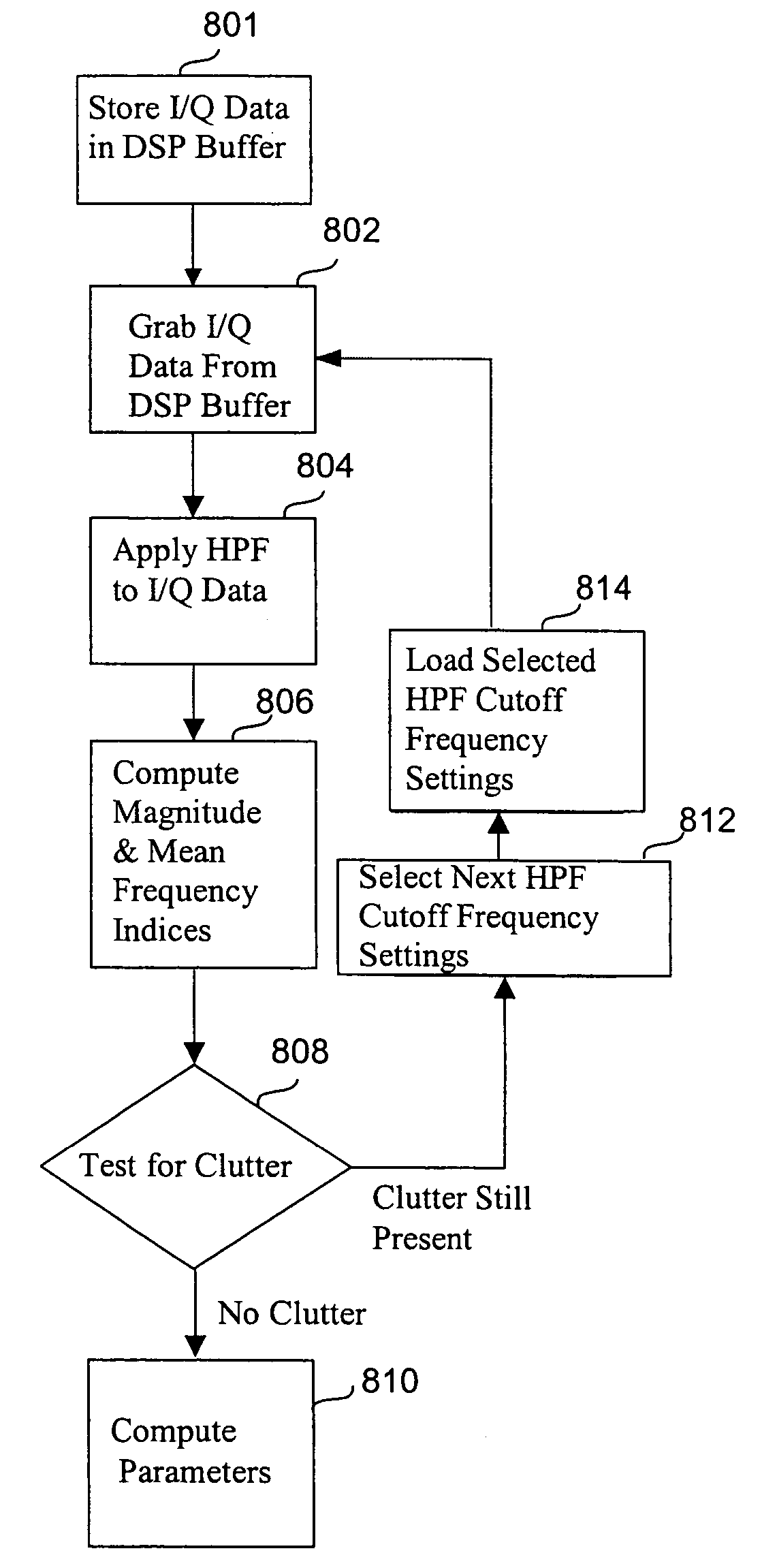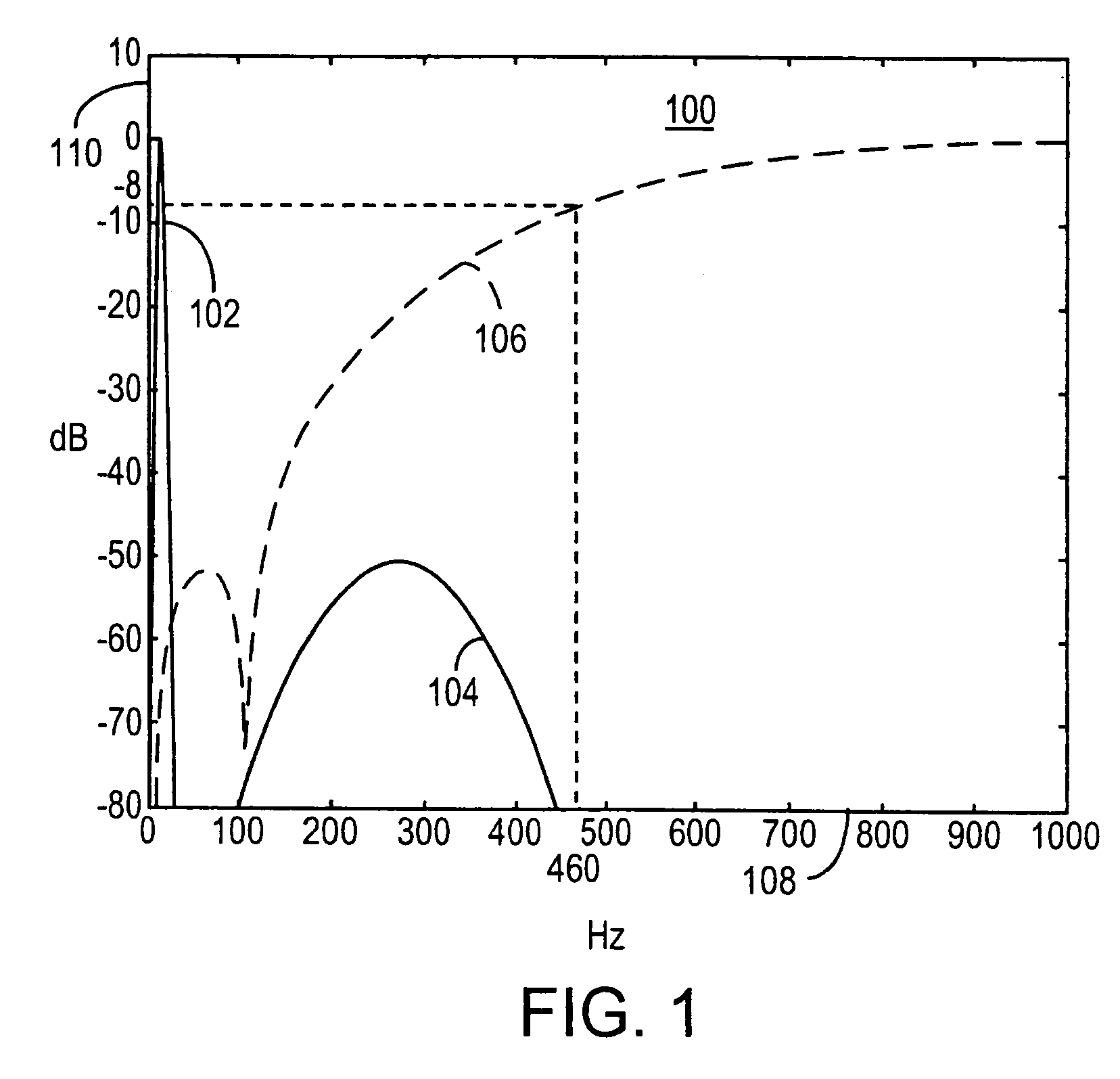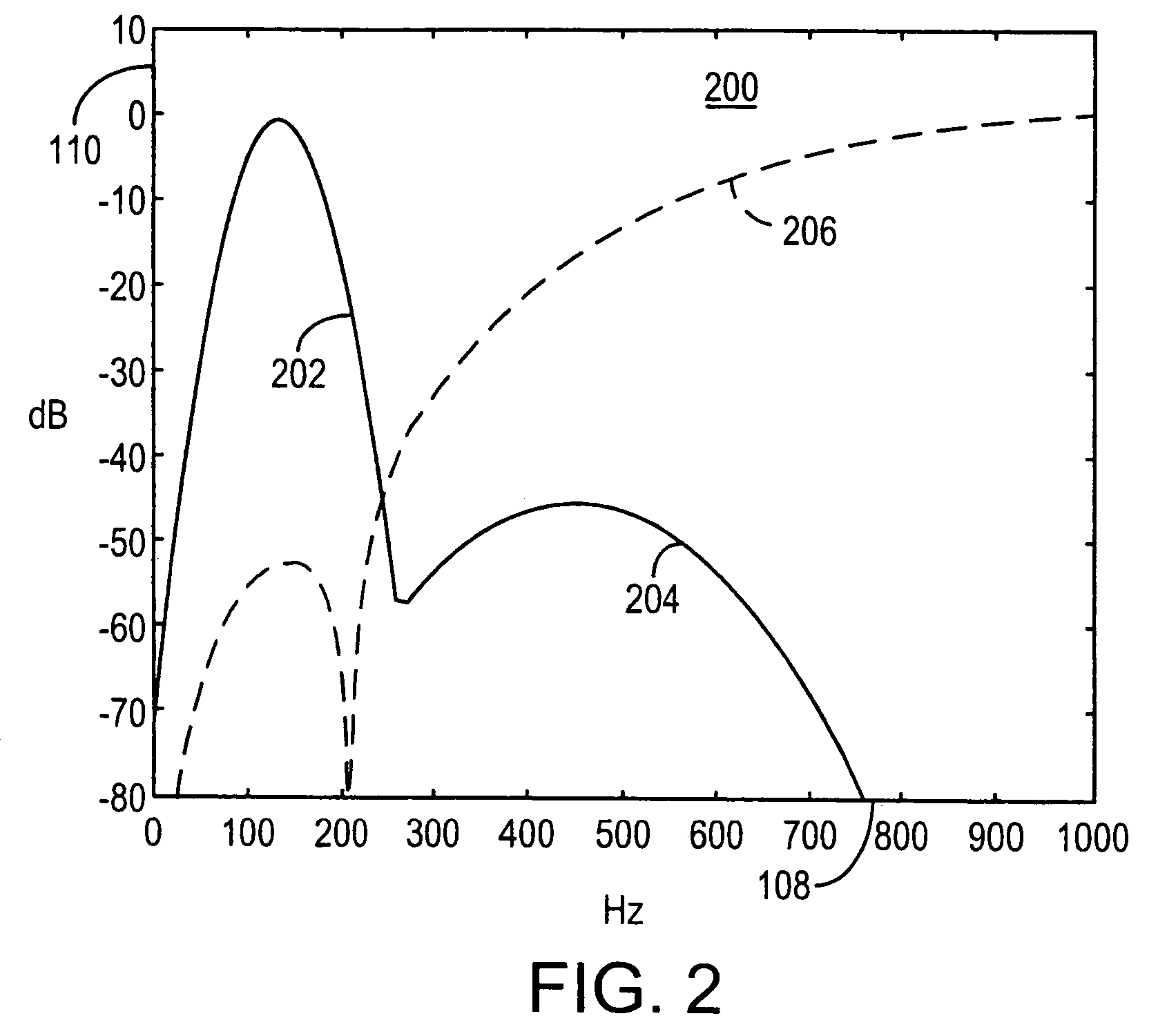Ultrasound clutter filtering with iterative high pass filter selection
a filtering and ultrasonic technology, applied in the field of filtering, can solve the problems of i/q data analysis being dominated, strong reflections of orders of magnitude, and weak echo return of moving blood, and achieve the effect of suppressing color flash artifacts without compromising low flow detection
- Summary
- Abstract
- Description
- Claims
- Application Information
AI Technical Summary
Benefits of technology
Problems solved by technology
Method used
Image
Examples
embodiment 500
[0057]FIG. 5 shows an embodiment 500 of ultrasound system 400 having a monitor 502, a keyboard 504, a mouse 506, a computing system 508, a transducer system 510, and cables 512. Monitor 502 may be touch sensitive or may be just for viewing. Monitor 502 is part of output system 402 (FIG. 4). If monitor 502 is touch sensitive, it is part of input / output system 414 (FIG. 4). Keyboard 504 and mouse 506 are part of input system 404 (FIG. 4), and are used to input text and / or select menu items, icons, virtual tabs and / or virtual buttons, for example. Computing system 508 includes processing system 408 and memory system 406 (FIG. 4). Transducer system 510 is part of transducer system 410, and is used for transmitting (generating and receiving) ultrasound signals to a medium under investigation such as a human body.
[0058]FIG. 6 shows another embodiment 600 of ultrasound system 400. Embodiment 600 has an imaging unit 604, a display and control unit 606, which may also be referred to as a Pro...
embodiment 600
[0059]Embodiment 600 is a hand-held device that can be operated with either hand 622 or 624. Ultrasound system 400 may be any type of handheld ultrasound imaging unit, such as that of U.S. Pat. No. 6,251,073.
[0060]Display and control unit 606 may be responsible for setting up, displaying, processing, storing, and annotating information gathered from imaging unit 604. The function of display and control unit 606 may include image reconstruction, color flow estimation, and Doppler computations, for example. Display and control unit 606 may include a Personal Digital Assistant (PDA). Display and control unit 606 may be battery operated, and screen 620 on display and control unit 606 may be touch sensitive. Handle 614 is for holding display and control unit 606. User interactions with display and control unit 606 may be through buttons 616 on handle 614 and / or touch sensitive control areas on screen 620. In an embodiment (not shown), handle 614 could be replaced with a small keyboard or...
embodiments 500 and 600
[0066]Embodiments 500 and 600 or any embodiment of ultrasound system 400 may provide a user interface that may include several intelligent (adaptive and context sensitive) active elements, e.g., windows, soft buttons, tabs, menus, toolbars, and / or icons.
[0067]In one embodiment, GUI 621 interface is voice controlled, and the user can train the device to recognize a set of words or combinations of words. Each recognizable unit (word or word combination) can be assigned to a device command, performing a specific function or a sequence of functions. Some or all functions can be voice activated obviating or partially obviating the use of hand controls. A similar GUI can be provided for embodiment 500 or any of the embodiments of ultrasound system 400.
[0068]FIG. 7A shows the main system block diagram 700 for an embodiment of ultrasound system 400 that supports B-mode and color flow imaging, input system 404, having a transducer array 710, a transmitter 711, a T / R 712, RF data 713, electro...
PUM
 Login to View More
Login to View More Abstract
Description
Claims
Application Information
 Login to View More
Login to View More - R&D
- Intellectual Property
- Life Sciences
- Materials
- Tech Scout
- Unparalleled Data Quality
- Higher Quality Content
- 60% Fewer Hallucinations
Browse by: Latest US Patents, China's latest patents, Technical Efficacy Thesaurus, Application Domain, Technology Topic, Popular Technical Reports.
© 2025 PatSnap. All rights reserved.Legal|Privacy policy|Modern Slavery Act Transparency Statement|Sitemap|About US| Contact US: help@patsnap.com



